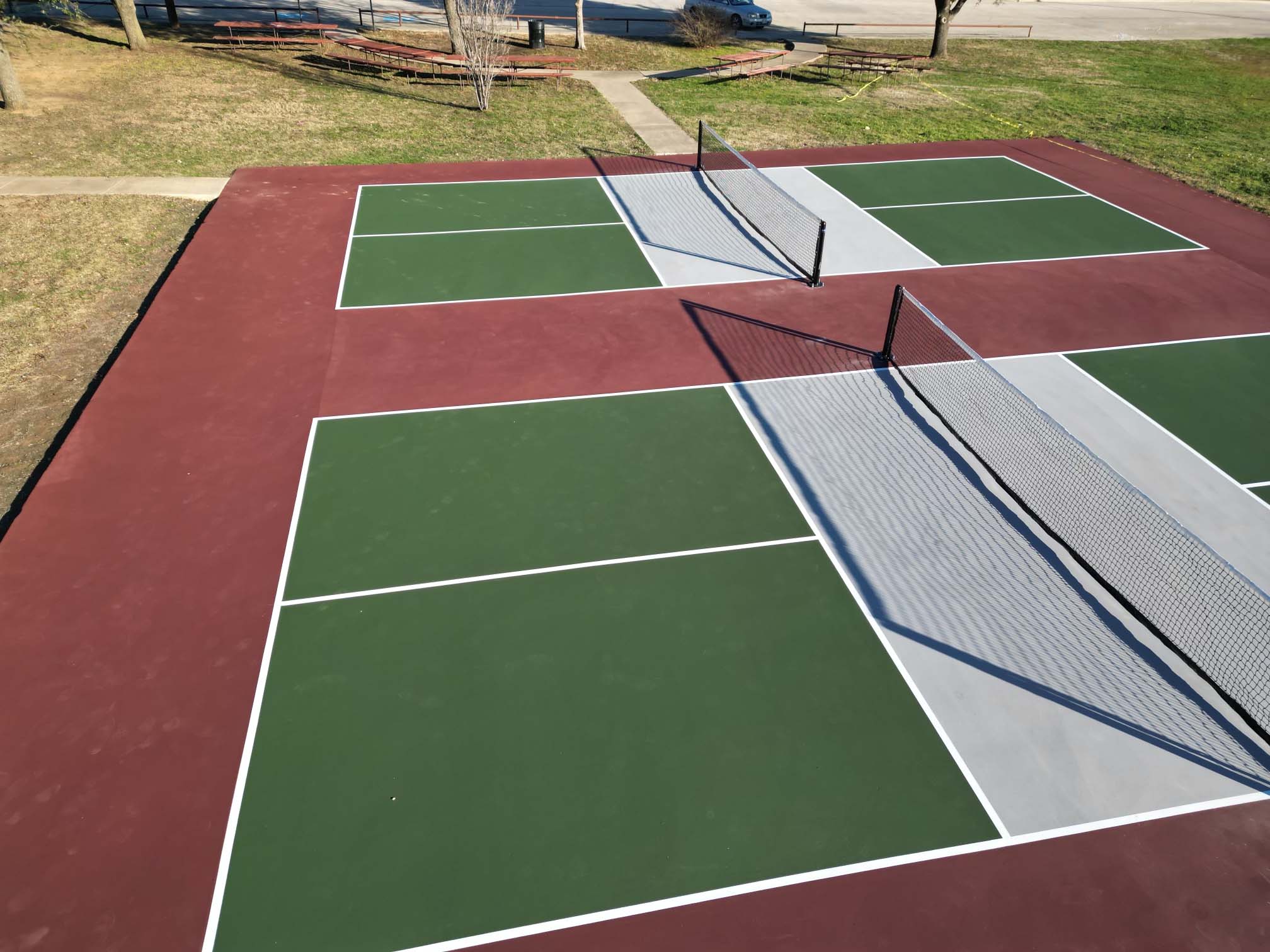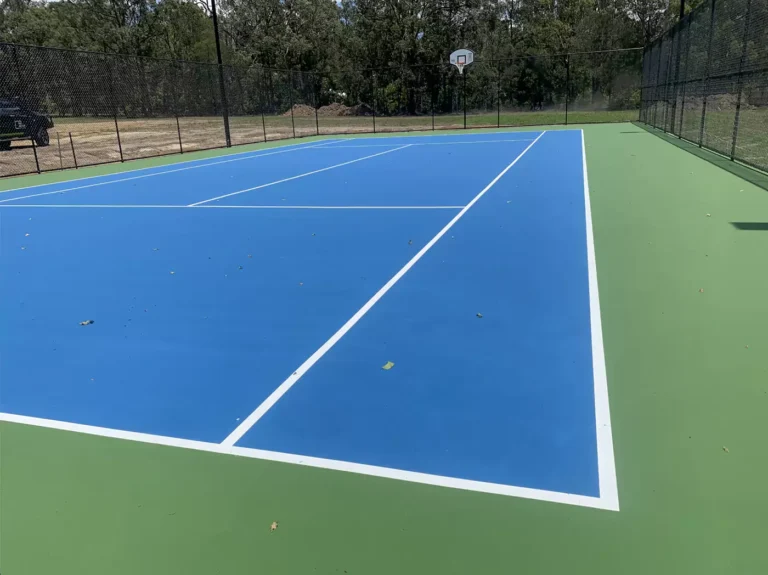Indoor and Exterior Pickleball Court Construction Solutions
Indoor and Exterior Pickleball Court Construction Solutions
Blog Article
Sustainable Practices in Pickleball Court Building You Need To Know
As the appeal of pickleball remains to increase, so as well does the requirement for sustainable practices in court building and construction. This method not only addresses environmental concerns but likewise improves the longevity and functionality of the courts. From selecting green products to applying reliable drainage and energy-saving lights remedies, there are many methods to think about. The effect of these practices extends much past the court itself. Understanding just how each element adds to a more lasting future invites even more expedition into the intricate equilibrium between entertainment growth and environmental stewardship.
Selecting Eco-Friendly Materials
Selecting environment-friendly products is an important action in the construction of lasting pickleball courts. The selection of lasting products not only decreases environmental impact but additionally boosts the durability and performance of the court. Trick products include reused rubber for the surface, which uses superb resilience and shock absorption while drawing away waste from land fills.
Additionally, utilizing in your area sourced materials reduces transportation exhausts and supports local economic situations. Pickleball court construction. For instance, making use of native woods for fencing and seats can offer a lasting visual while ensuring strength versus the aspects.
Integrating permeable products for court structures can better add to sustainability by permitting natural water drainage and reducing drainage. These choices not only safeguard regional environments however also advertise much healthier play atmospheres.
Reliable Water Drainage Solutions
While the selection of green products is crucial, executing efficient drainage options is equally important for maintaining sustainable pickleball courts. Proper drainage not only protects the court surface from water damages yet also reduces disintegration and drainage, promoting environmental stability.
Reliable drainage systems can consist of permeable paving, which enables water to penetrate the ground rather than pooling externally. This minimizes the possibility of standing water, which can cause mold and mildew and various other upkeep concerns. In addition, incorporating tactically put water drainage networks and swales can guide excess water far from the court location, ensuring a dry playing surface area and avoiding soil disintegration.
Making use of native greenery in the landscaping around the courts can additionally boost drain by absorbing excess water and decreasing overflow. These plants need much less watering and advertise biodiversity, straightening with sustainable practices.
Additionally, it is critical to consistently preserve the water drainage system to ensure its long-lasting effectiveness. This includes clearing debris and surveillance for obstructions. By prioritizing effective water drainage services, pickleball court erectors can considerably add to the sustainability and long life of the facility, inevitably profiting both gamers and the environment.
Energy-Efficient Lighting Options
As the demand for pickleball proceeds to expand, integrating energy-efficient lights options into court layout has become significantly important for sustainability. Typical lights systems commonly take in too much power, adding to greater functional prices and ecological effect. For that reason, embracing modern-day, energy-efficient modern technologies is essential for both new buildings and restorations.
LED (Light Emitting Diode) lighting stands out as a top selection as a result of its longevity and power financial savings (Pickleball court construction). Contrasted to traditional illumination, LEDs utilize approximately 75% less power and can last up to 25 times longer, considerably lowering upkeep expenses. The directional nature of LED lighting minimizes light contamination, guaranteeing that lighting is focused on the court rather than bordering areas.

Sustainable Surface Area Alternatives
Exploring sustainable surface area alternatives for pickleball courts has obtained traction among gamers and builders alike. The emphasis on environmentally friendly products not only aligns with the growing ecological awareness however likewise improves the efficiency and durability of the courts.
This material supplies exceptional shock absorption, lowering the risk of injuries for gamers while promoting sustainability. These floor tiles are very easy to install and replace, and their adaptability allows for different court arrangements.
All-natural turf courts are also becoming a sustainable selection, advertising biodiversity and reducing the warmth island impact. However, they call for regular upkeep and water, which might not straighten with all sustainability goals.

Water Preservation Techniques

An additional efficient method entails the installment of rain harvesting systems. These systems accumulate and store rain for use in preserving court surfaces and landscaping. This approach not just conserves safe and clean water yet likewise minimizes dependence on local sources.
Moreover, using drought-resistant landscaping around the courts is essential. Native plants call for less water and are better adapted to local environment problems, hence decreasing overall water usage. Additionally, utilizing effective irrigation systems, such as drip irrigation, makes certain that water is delivered directly to plant origins, decreasing dissipation and waste.
Final Thought
Incorporating lasting techniques in pickleball court building and construction significantly adds to environmental preservation and source effectiveness. By prioritizing these methods, the building and construction of pickleball courts can align with wider ecological objectives while promoting longevity and performance within areas.
As the appeal of pickleball proceeds to climb, so too does the need for sustainable methods in court building.Picking eco-friendly materials is a critical action in the building and construction of lasting pickleball courts. By focusing on energy-efficient lights alternatives, pickleball court constructors can add to an extra lasting future while fulfilling the requirements of stakeholders and players alike.Including lasting surface area options not view only enhances the efficiency of read more pickleball courts however likewise leads the means for carrying out efficient water conservation strategies.Integrating sustainable techniques in pickleball court building considerably adds to ecological preservation and source efficiency.
Report this page